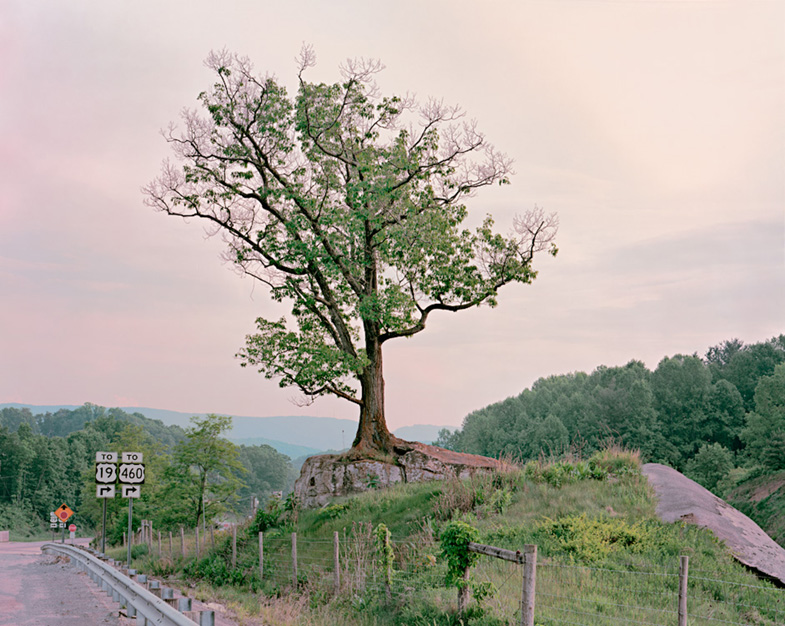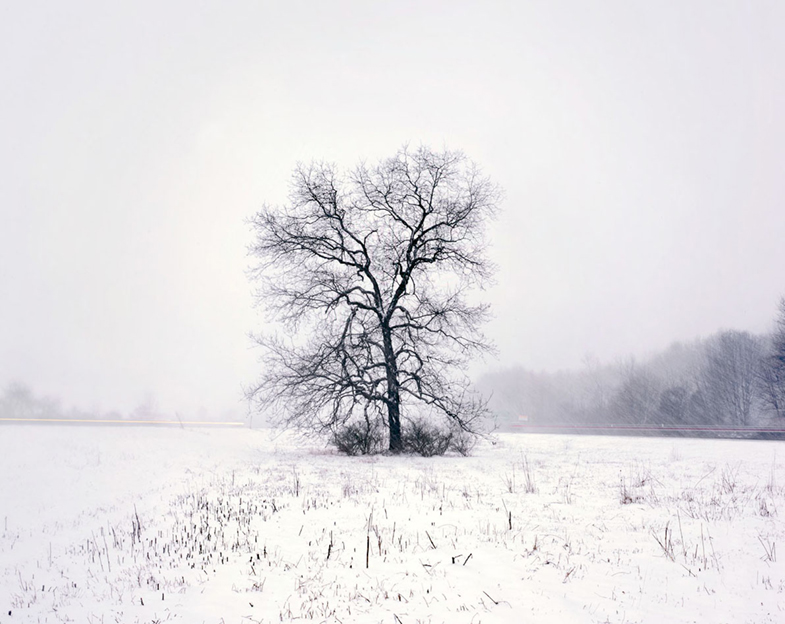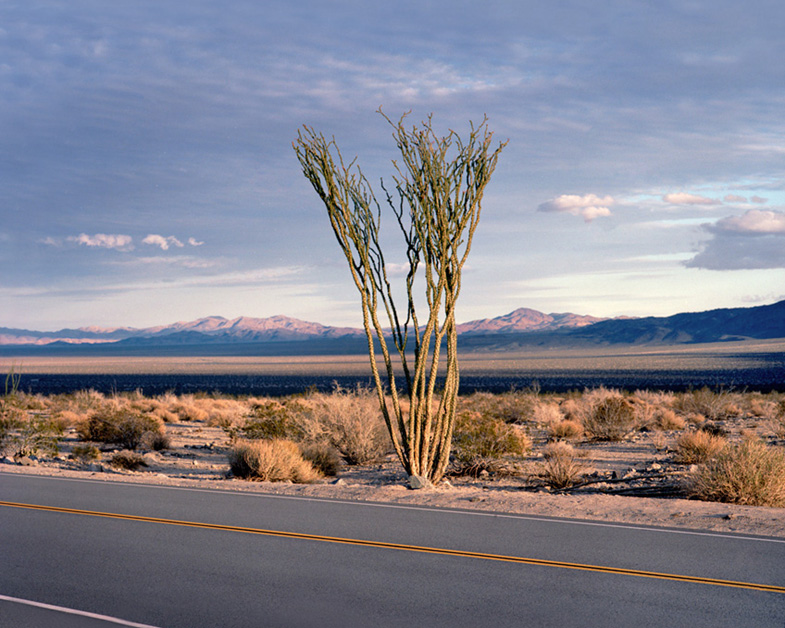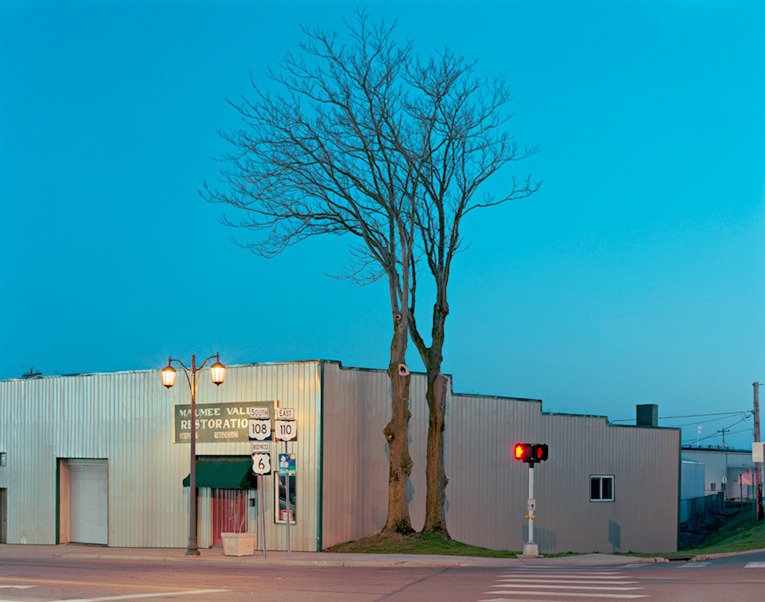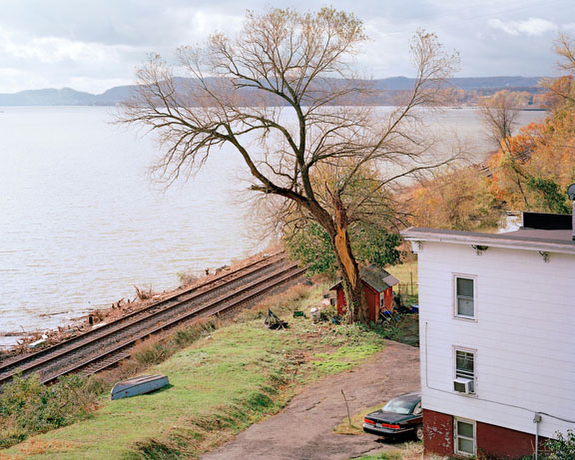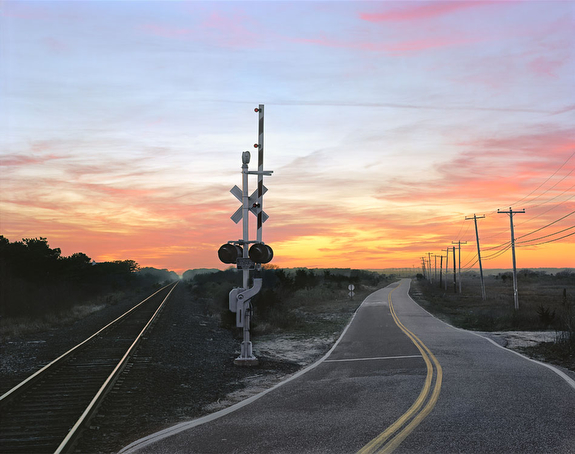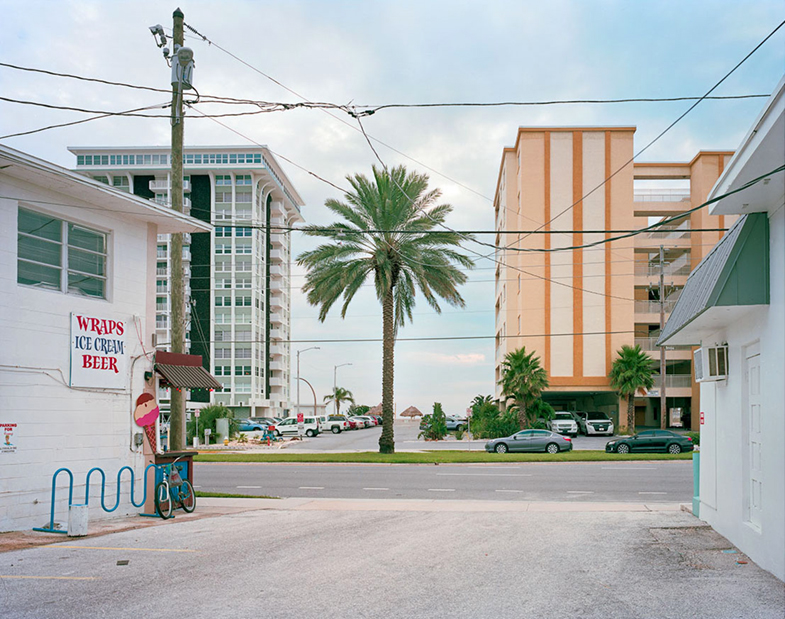
Despite the archaic sprawl and unaccommodated loneliness pervading America’s byways, there remains the oldest, most striking structures of all. One guards a rocky crest overlooking U.S. Route 19 near Rocky Gap, West Virginia, forming a mise en scène resembling a contemporary play. As if waiting for me to pass, a solitary Ocotillo Cactus stands aside the road in California’s desert. Along Lincoln Highway in Pennsylvania, we see power lines stretching over a tree stump, as if to make claim to the territory. Trees sprout up in the most surprising places. During long stretches of time driving, it is difficult not to begin to anthropomorphize, to attribute these trees human characteristics. In cities we have parks deliberately constructed and trees planted according to the phenomenological goals of urban planners. These arboreal roadside companions seem to eschew any of that. Instead they stand as objects of serendipitous beauty, unintentionally placed yet completely appropriate.
— John Sanderson, New York City
